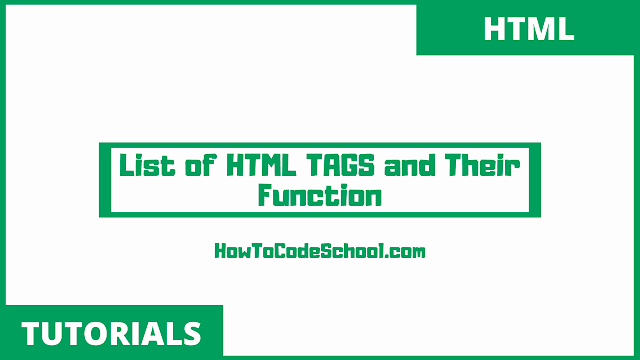

There are nearly 100 different types of HTML tags that you can use for your web pages. This tag will format any text between the opening tag and the closing tag as underlined. Here the and are the HTML tags and “Underline Tag” is the HTML element, i.e. This tag will format any text between the opening tag and the closing tag as italic. Here, the and are the HTML tags and “Italic Tag” is the HTML element (the on-page text.) This tag will format any text between the opening tag and the closing tag as bold. Here the and are the HTML tags and “Bold Tag” is the HTML element, i.e. Using this tag will format any text between the opening tag and the closing tag as a Heading 2 (a type of subheading.) Bold Tag In this example, and are the HTML tags and “Heading Tag” is the HTML element, i.e. This tag formats any text between the opening tag and the closing tag as a standard paragraph or main body text. The and are the HTML tags and “Paragraph Tag” is the HTML element, i.e.
#HTML TAGS LIST WITH EXAMPLES HOW TO#
Instructions on how to display an on-page elementĪdditional information about the on-page elementsĪppear in the starting tag before any elements HTML Attributes provide additional information about HTML elements and appear at within the HTML tag (e.g.HTML Elements are the on-page content sandwiched within the tags.They begin with a and precede and follow the content of the element. HTML tags contain instructions on how to display an on-page element.Here’s a breakdown of how elements, tags, and attributes work together: An HTML attribute describes the characteristics of that element. An HTML tag affects how an HTML element appears. What’s the Difference Between Attributes and HTML Tags?Īlthough this guide is all about HTML tags, it’s important to know the difference between HTML tags, elements, and attributes.Īn HTML element is an item on the page it’s part of the web page’s content. You’ll typically use unclosed tags for metadata or line breaks. That means that the HTML tag does not need to be closed with a.

#HTML TAGS LIST WITH EXAMPLES CODE#
Servers read HTML code to understand and render content. These tags live in the HTML (or the Hypertext Markup Language) of every webpage.

You can use tags to format italics, line breaks, objects, bullet points, and more. HTML tags are simple instructions that tell a web browser how to format text. Use this guide as a reference for standard HTML tags and how to use them. Lists Unordered Lists Ordered Lists Other Lists HTML Block & Inline HTML Classes HTML Id HTML Iframes HTML JavaScript HTML File Paths HTML Head HTML Layout HTML Responsive HTML Computercode HTML Semantics HTML Style Guide HTML Entities HTML Symbols HTML Emojis HTML Charset HTML URL Encode HTML vs.Understanding each HTML tag is a crucial step to implementing your own HTML code.


 0 kommentar(er)
0 kommentar(er)
